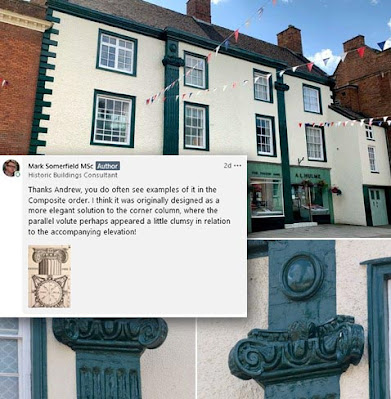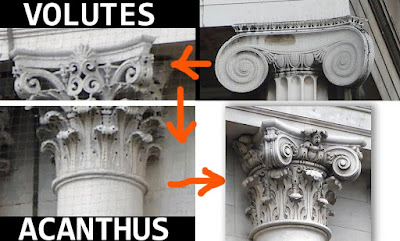I was intrigued by a post on LinkedIn where Mark Somerfield credited the diagonal version of Ionic to Scamozzi. I hadn’t heard this attribution before, but I knew Scamozzi as a pupil of Palladio who completed some of his projects and wrote a book, as so many of the architects of that era did.
It struck me that this version of Ionic could be derived by reverse engineering the Composite Order. If you take a Corinthian capital and swap out the volutes with more substantial scrolls based on the Ionic order, you arrive at Composite. In the process you will have adapted the scrolls from two sets of parallel pairs to four diagonal corners.
Take the Acanthus leaves away again, and you get Scamozzi’s Ionic. So we have the “flat/parallel” and the “diagonal corners” These are the two types that currently feature in my modular classical columns system for Revit. But in this latest bout of research I also came across an intermediate version that may well predate the…



